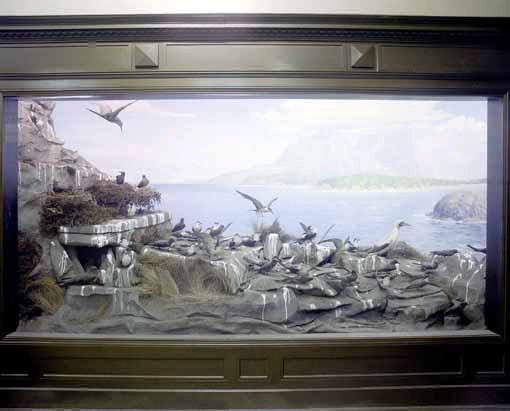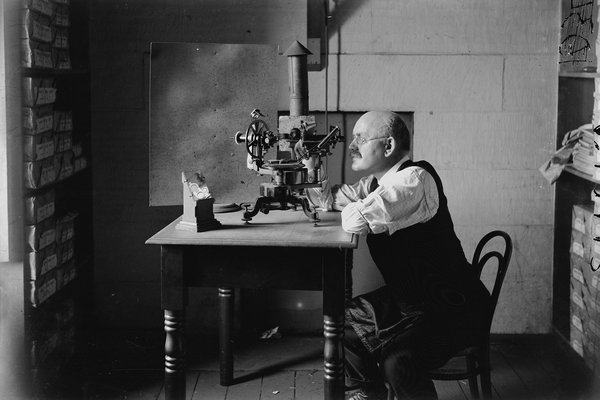The oldest diorama in Australia?
I am now fairly certain that not only do we have the last remaining natural history diorama in NSW but that we were the first Museum to use the diorama in Australia.
The diorama form was developed in England at the end of the 19th Century to bring Museum specimens out of their seried, taxonomic ranks into a different relationship wth each other and the visitor. With animals placed in a carefully detailed scene from the natural world including authentic foregrounds and realistic backdrops, 3-dimensional diormas let Museum visitors experience animals in their 'natural' habitats for the first time.
No doubt influenced by nature photography, department-store windows and popular travelling diorama entertainments, the Australian Museum began to develop its own dioramas in the early 1920s.
The first, showing Bostwain birds on Lord Howe Island, was installed in our Skeleton gallery in 1921, with two more to follow in the next two years. All three were developed during an extended field trip to Lord Howe Island in early 1921 where scientists, preparators, taxidermists and artists worked together to detail particular scenes from the island which they then recreated in dioramas at the Museum.
This is well before the form developed the scale and ambition it took on in the great habitat dioramas at the American Museum of Natural History or the Smithsonian during the 1930s but nevertheless a significant early attempt to engage Museum visitors with something more entertaining than glass cases stuffed full of specimens.

© Australian Museum












